https://ift.tt/3nucB0B Coffee Data Science Cross-Sectional Slicing on a Spent Staccato Shot As part of my deeper dive into the small mig...
Coffee Data Science
Cross-Sectional Slicing on a Spent Staccato Shot
As part of my deeper dive into the small migration of fines, I decided to run some experiments with spent coffee. In this experiment, I used a layered shot with a twist to give fines the best possible chance of migrating by putting coarser grounds on the bottom.
Shot Preparation
I put a paper filter at the bottom with the aim to catch any fines that potentially made it through.
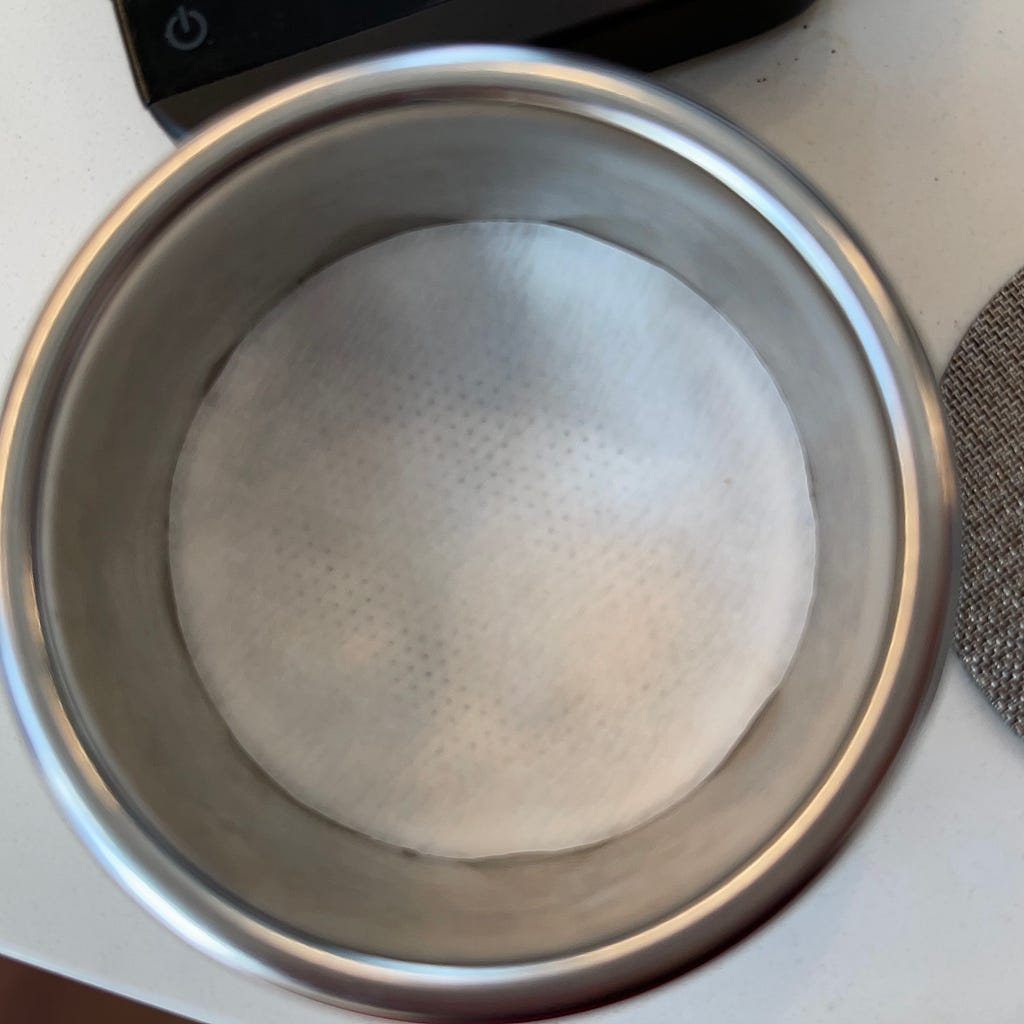
Then I took some measurements on the sifted grounds before putting it into the basket:
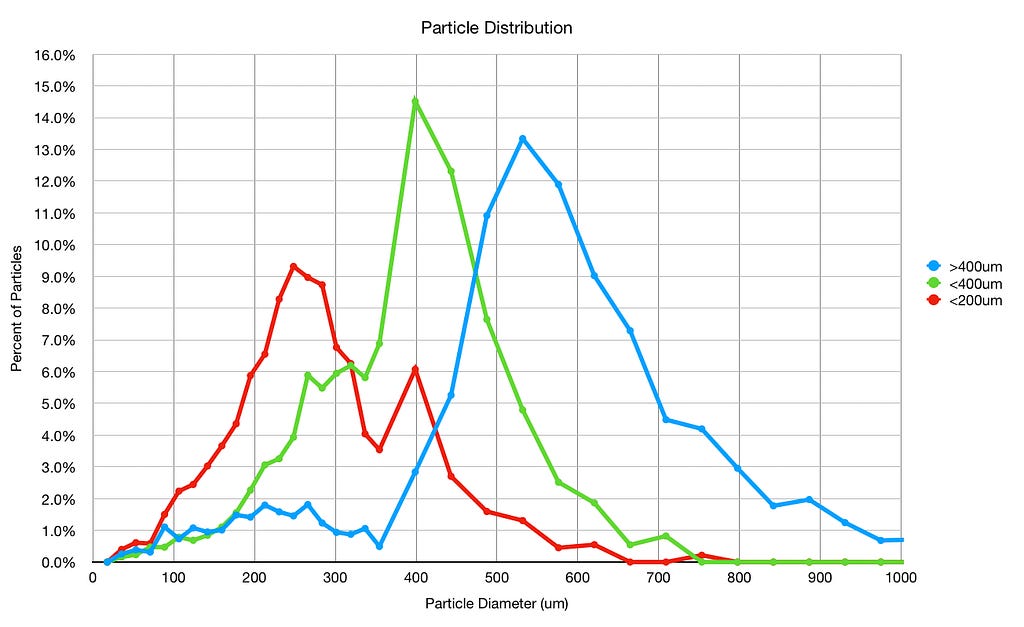
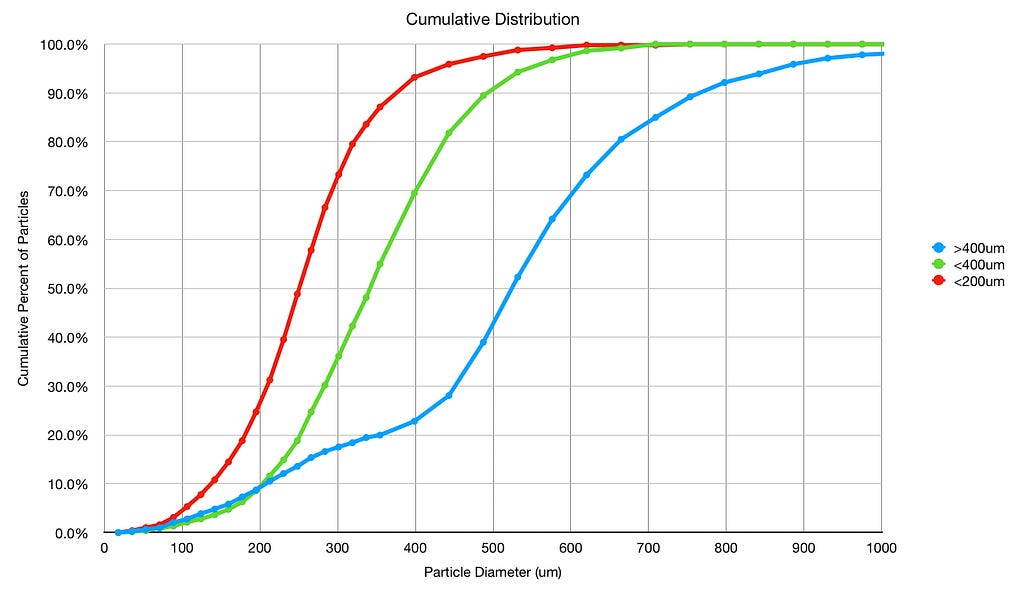
I oriented the shot in reverse to a staccato shot:
- Paper filter
- Bottom Layer is >400um
- Middle Layer is <400um
- Top Layer is <200um
- Metal mesh screen on top
While these layers are mostly separated, the separation wasn’t absolute because coffee grounds stick together. So it is very difficult to get perfectly sifted coffee.
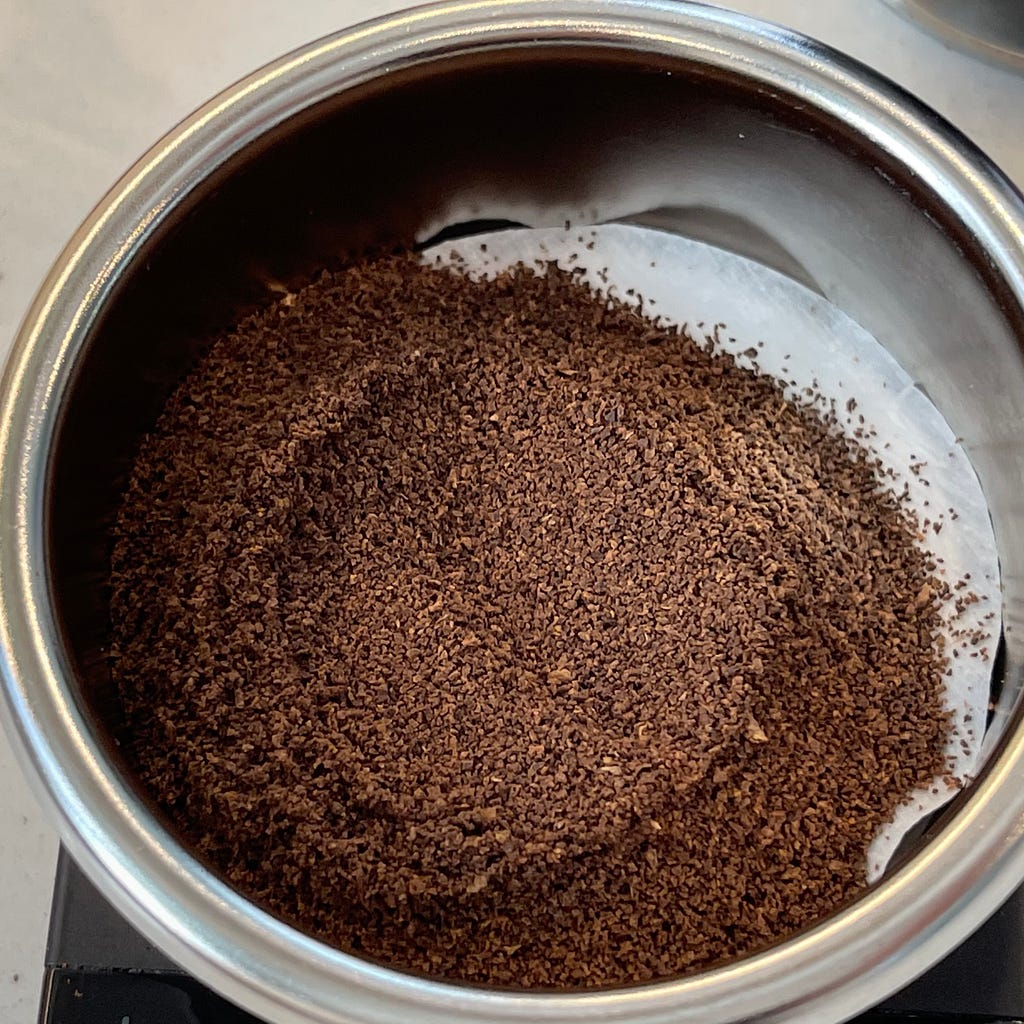
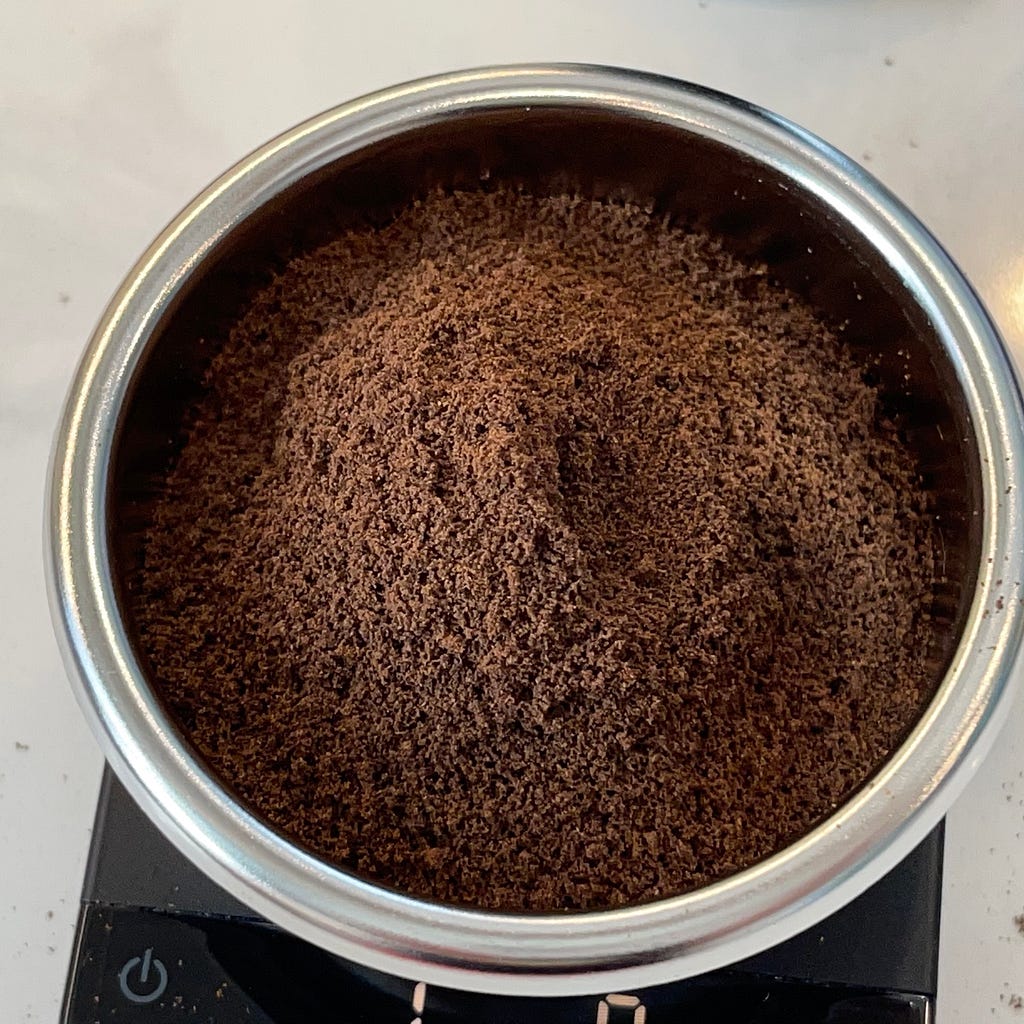
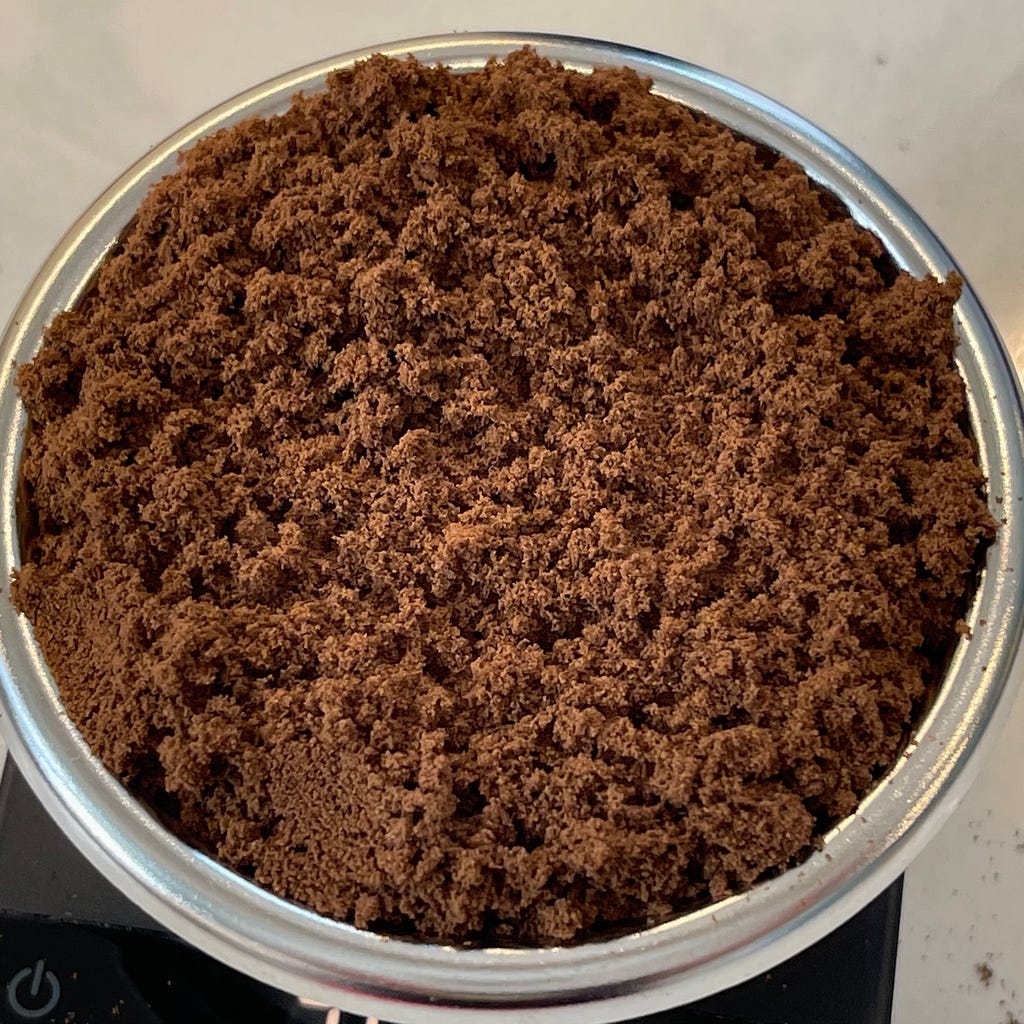
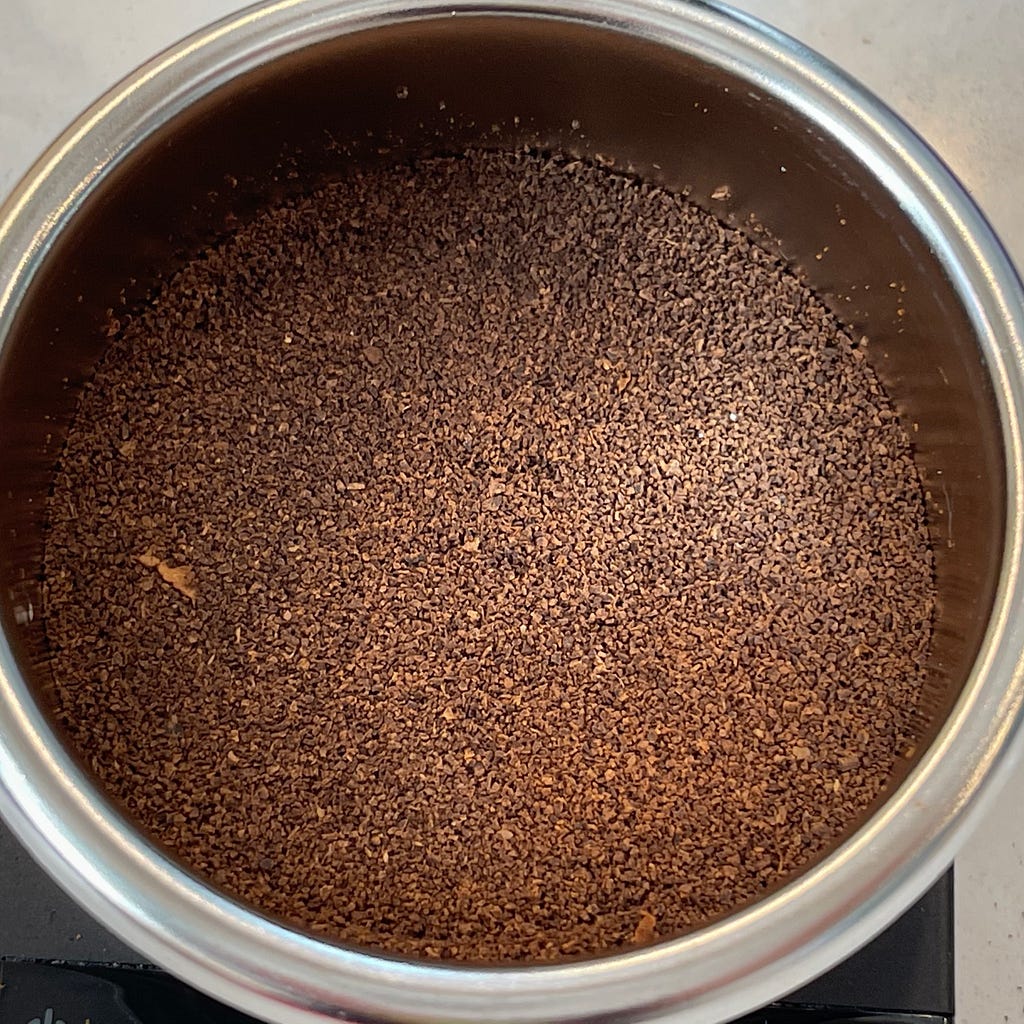
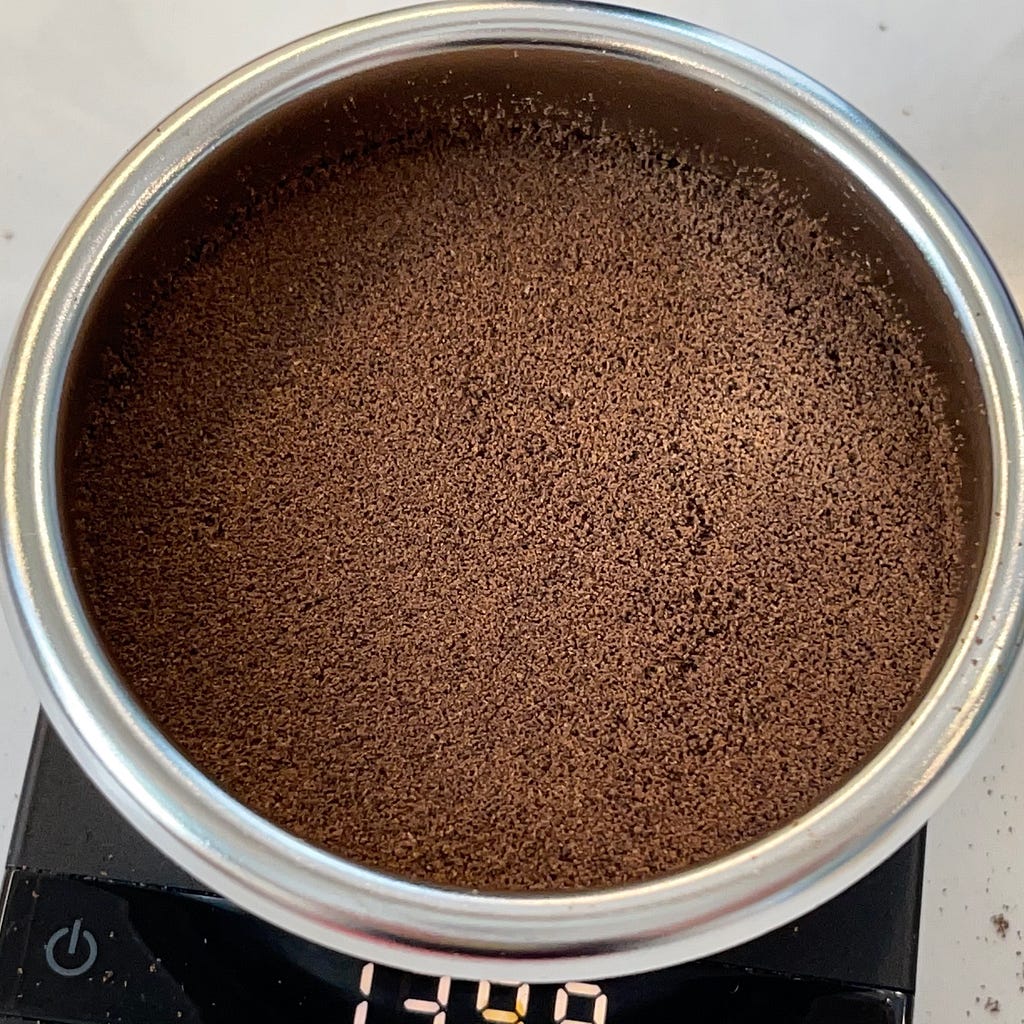
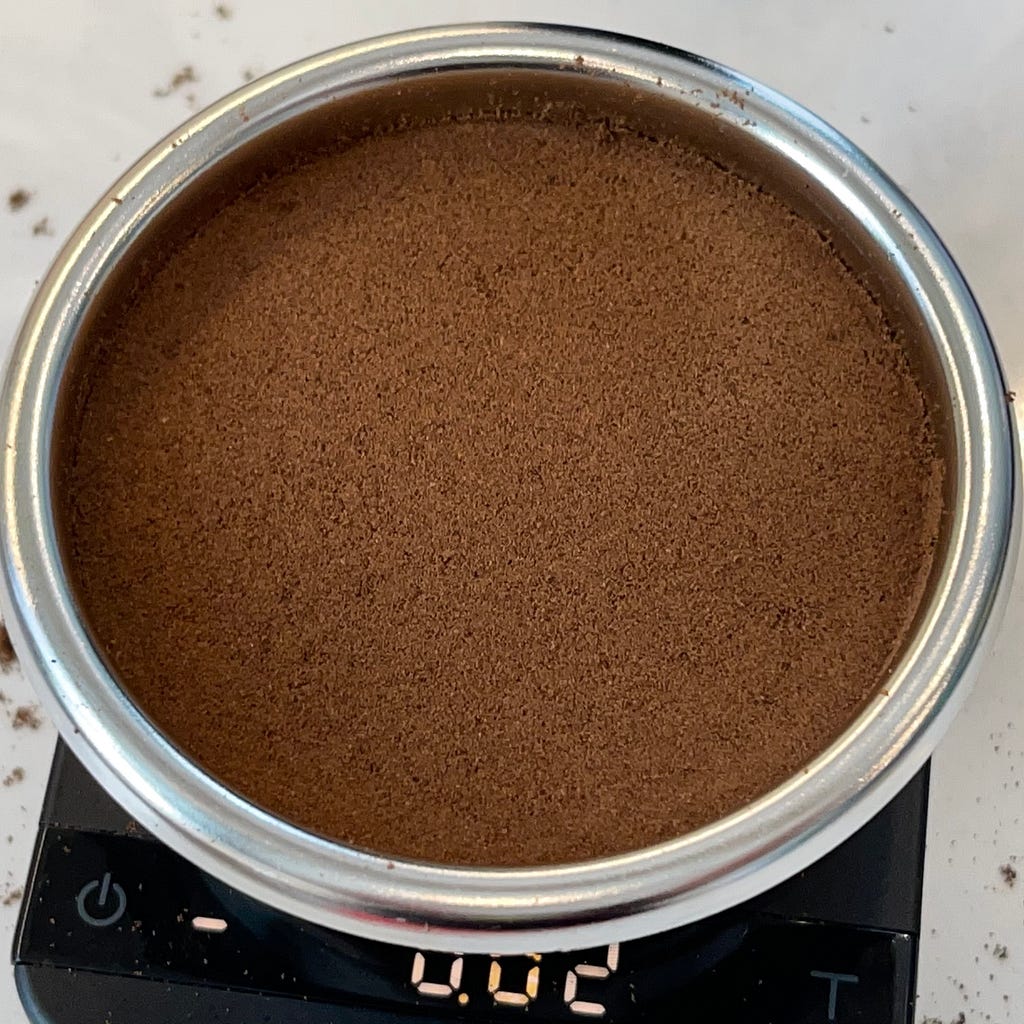
Pulling the Shot
I pulled the shot, and it ended up having a 1% Extraction Yield, which is higher than expected. The water was also cloudy, so I saved it.
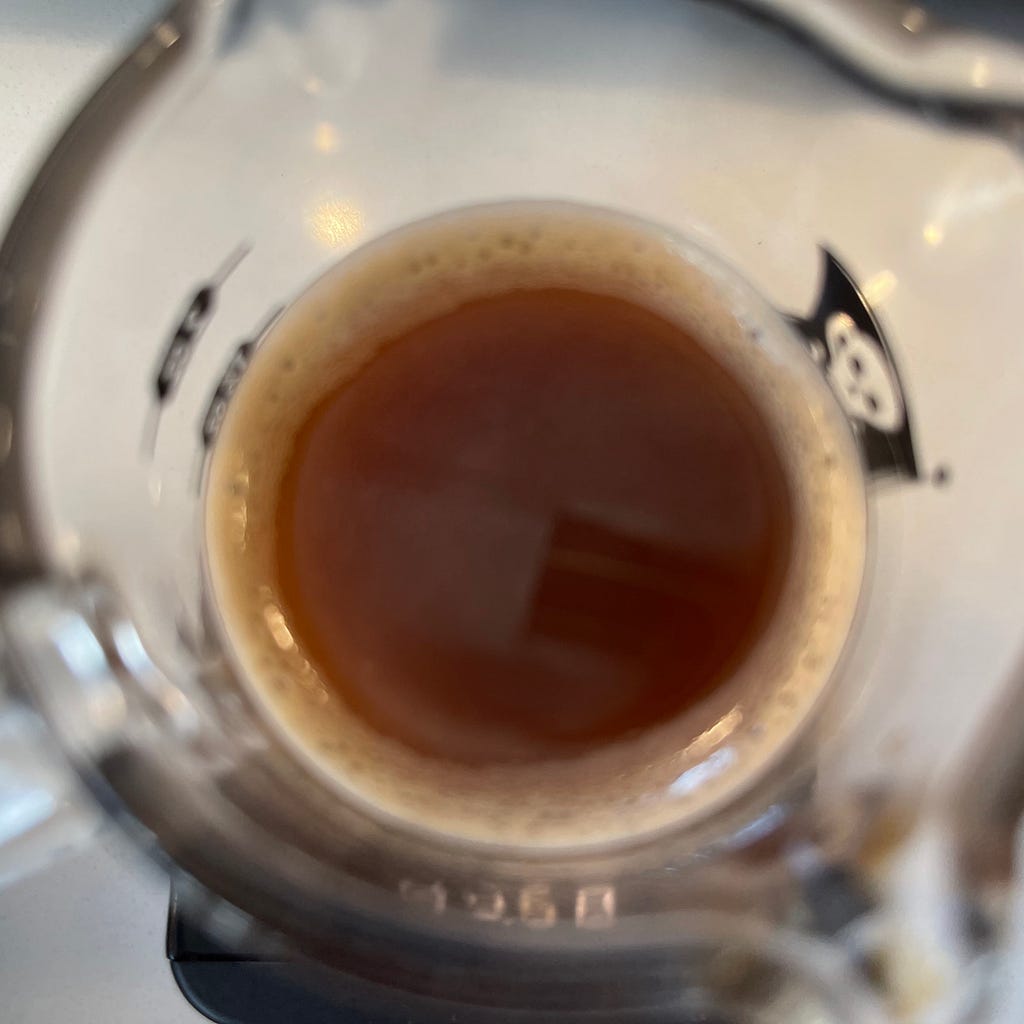
The puck was clean, and the bottom of the filter was relatively clean. The shot came out even.
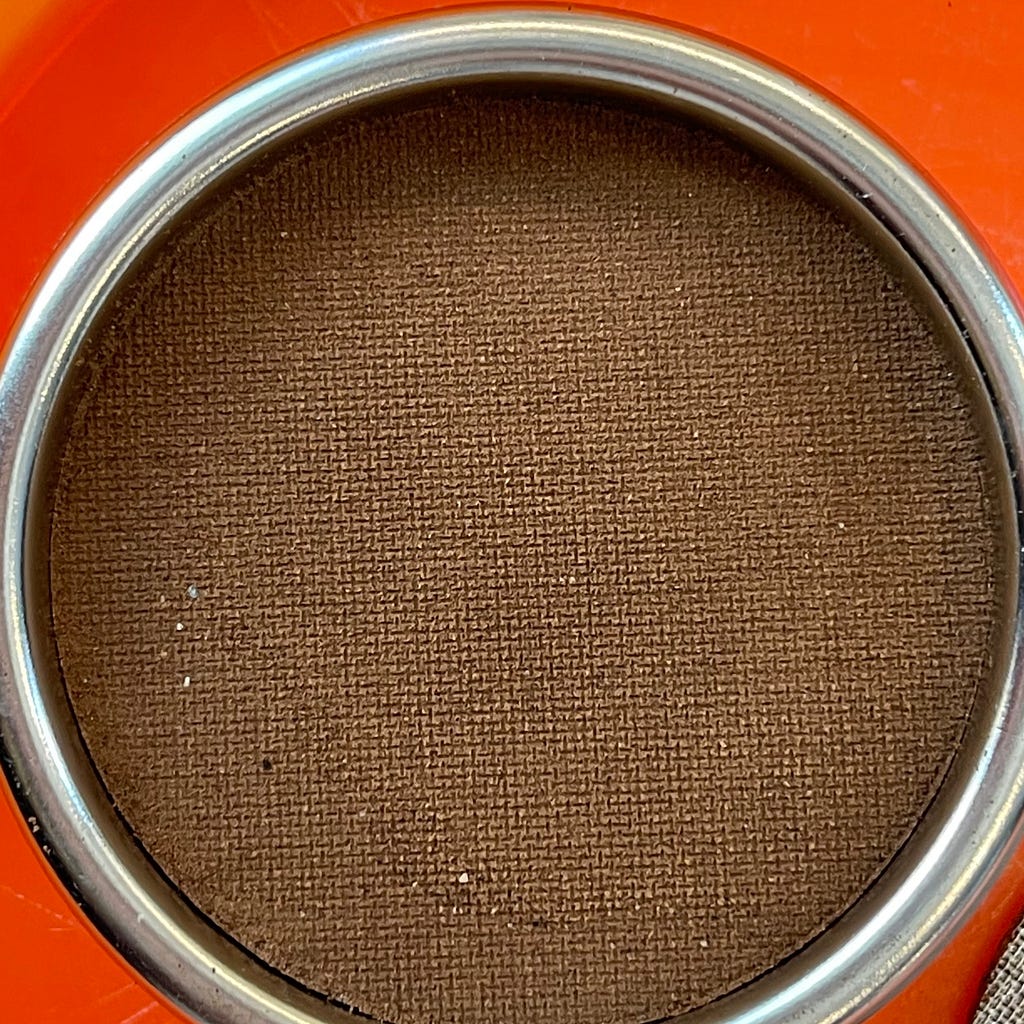
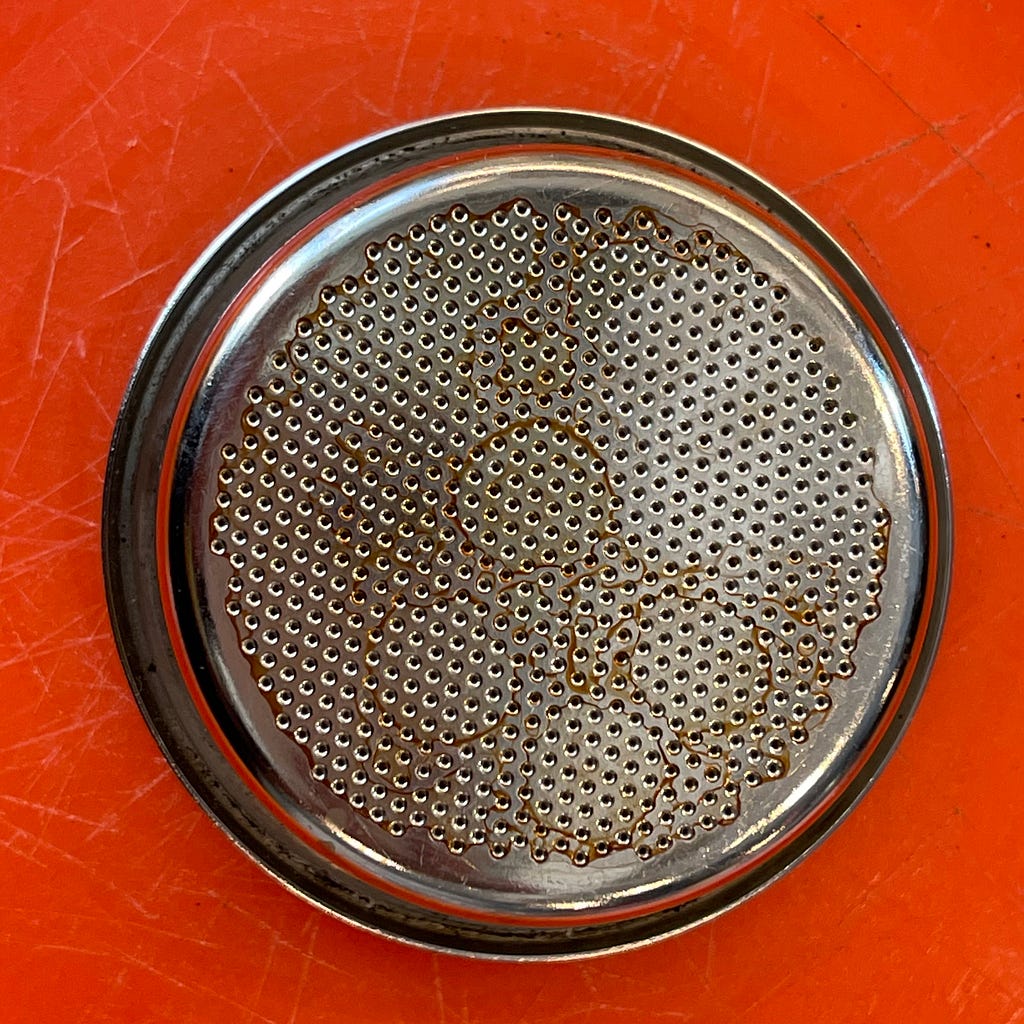
Cutting the Puck
The trouble started when I tried to get the puck out. Because the bottom layer was coarse, it didn’t seal in a way that I could easily tamp it out. The coarser particles didn’t stick together well. Finally, I added some water to make sure it wasn’t too dry, so it wouldn’t break apart. Then I cut a hole to force it out with a knife.
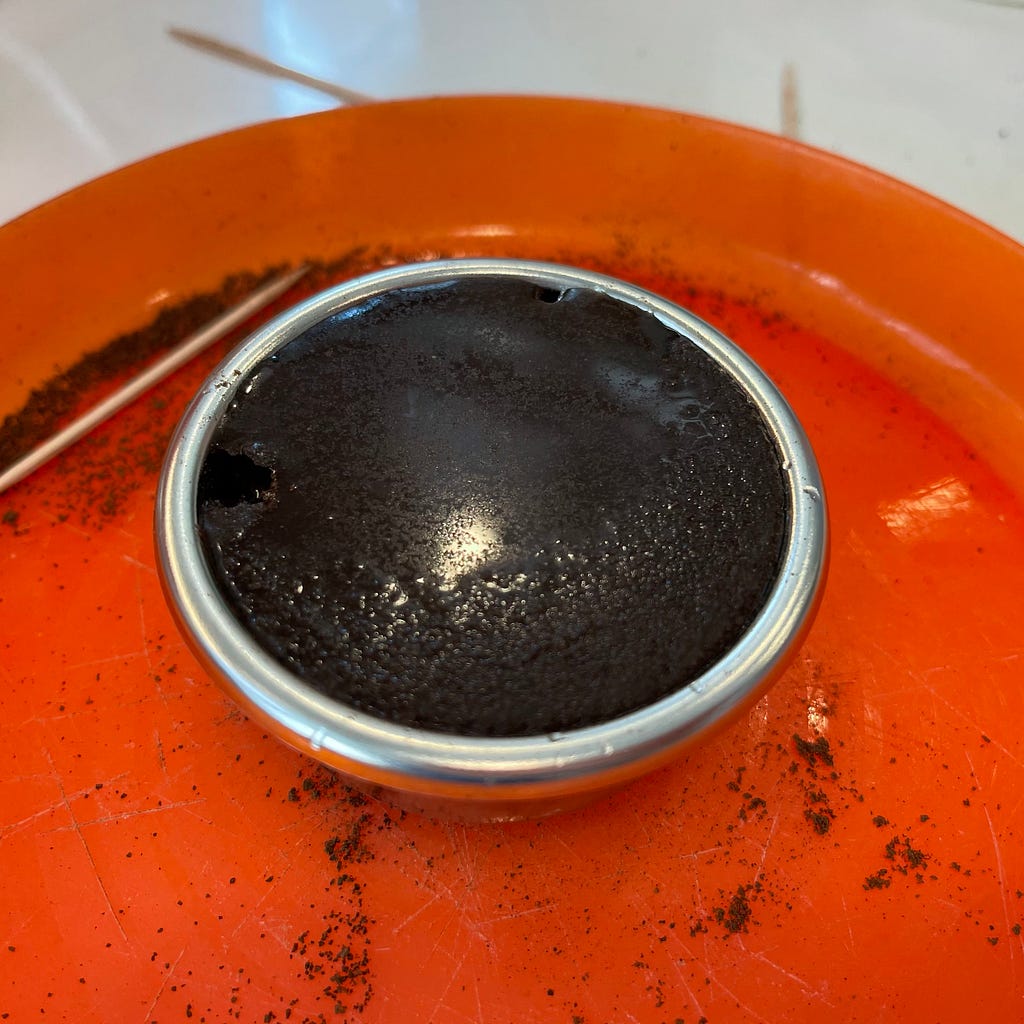
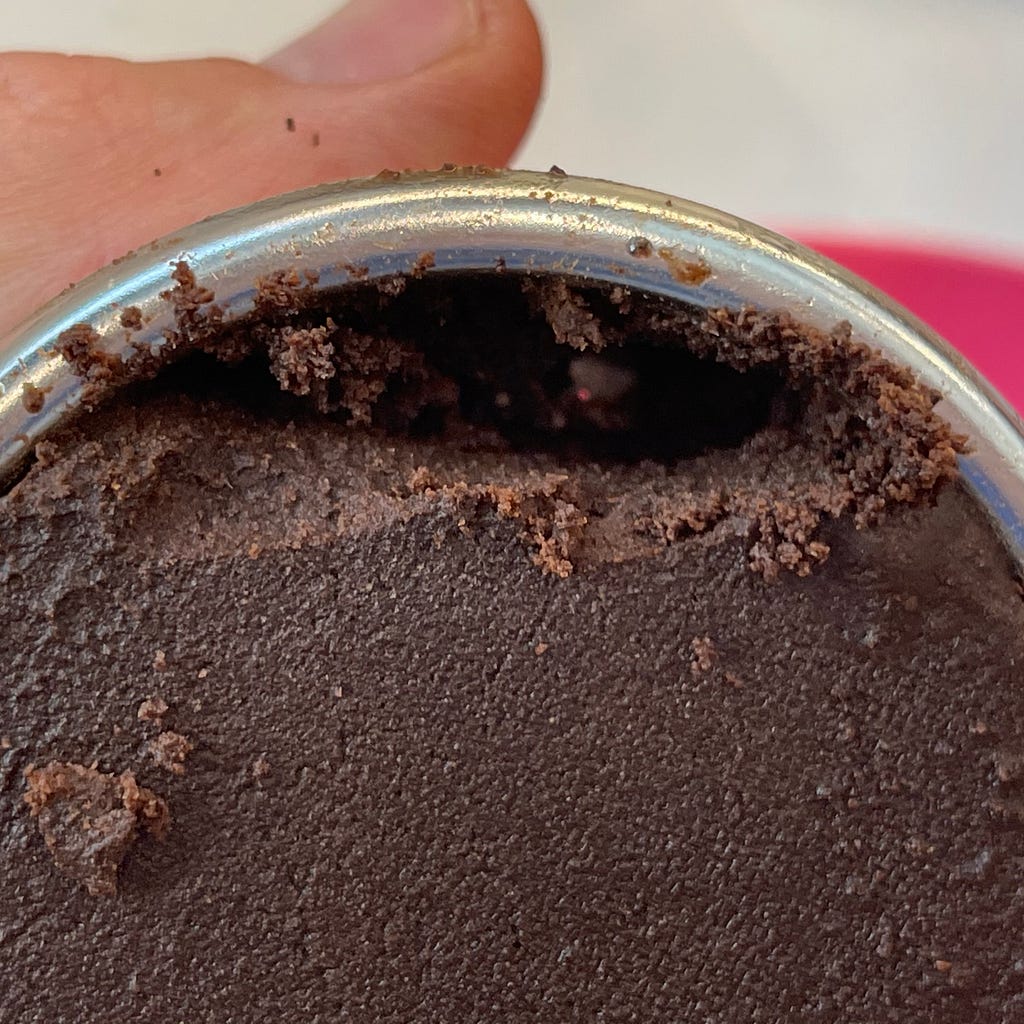
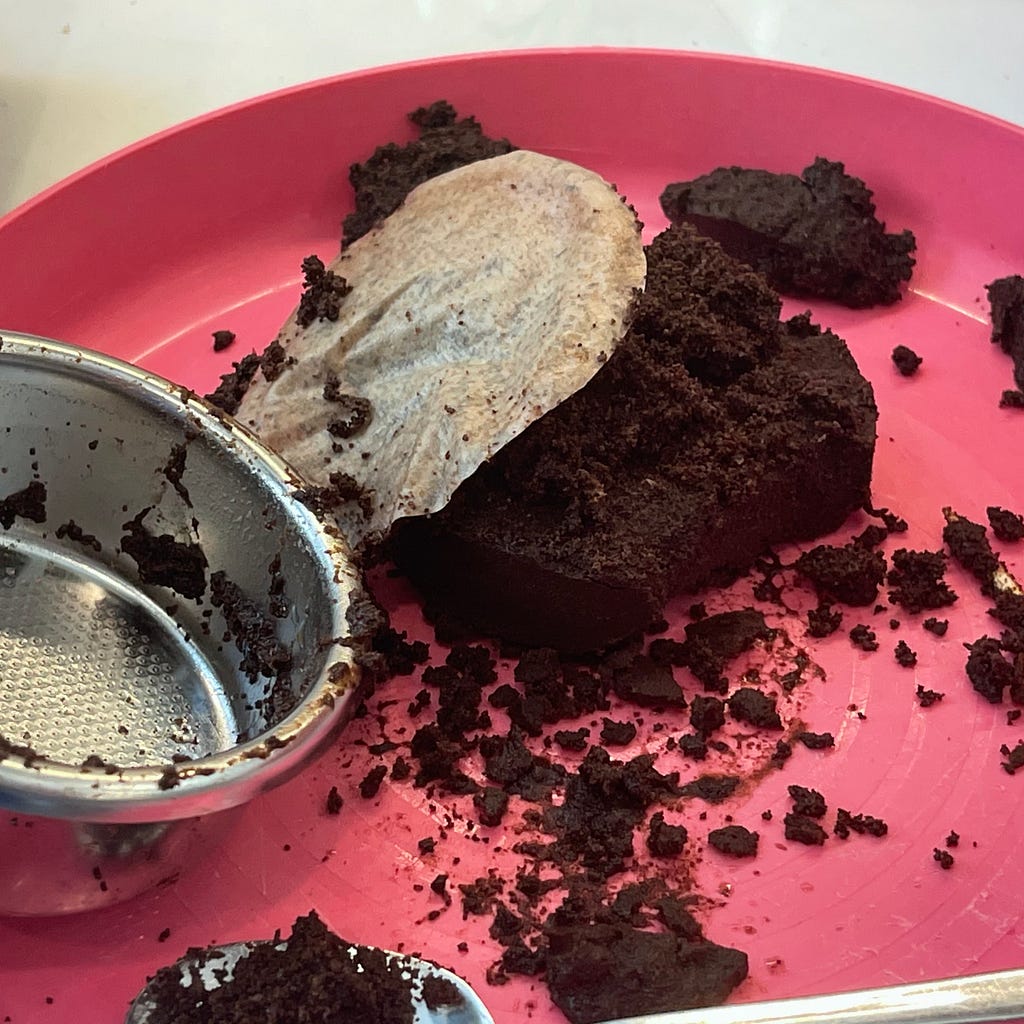
It was a mess, but I was able to get a clean slice. The main issue was that the bottom of the puck with the coarser grounds shifted quite a bit and some of the finer particles went down to the bottom of the puck.
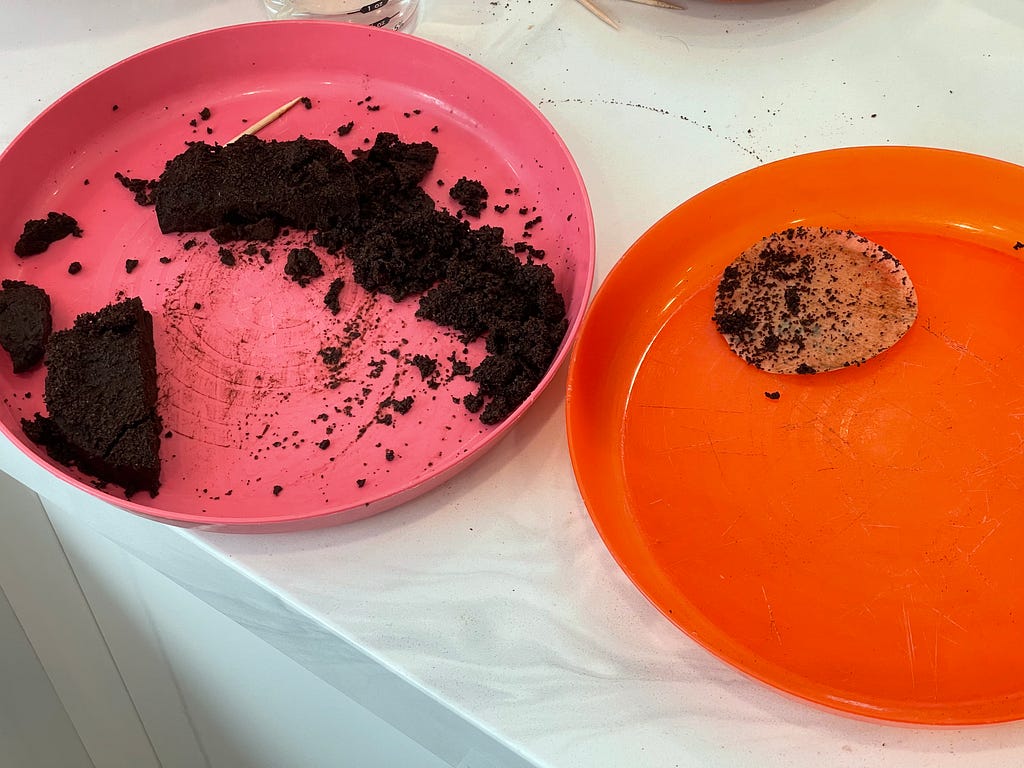
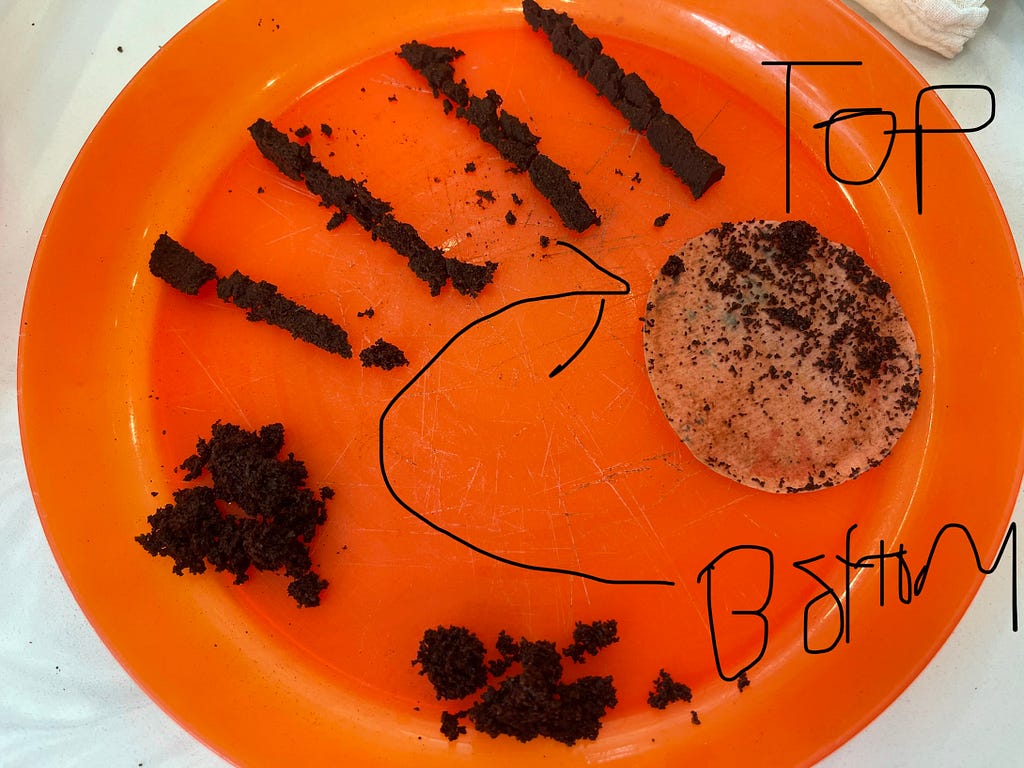
In the cup, when I poured out the liquid, some fines were left over. They could have come from the bottom of the puck because sifting isn’t perfect. If they were from higher up in the puck, I suspect there would have been more. I don’t think they accounted for a significant portion of the grounds either.
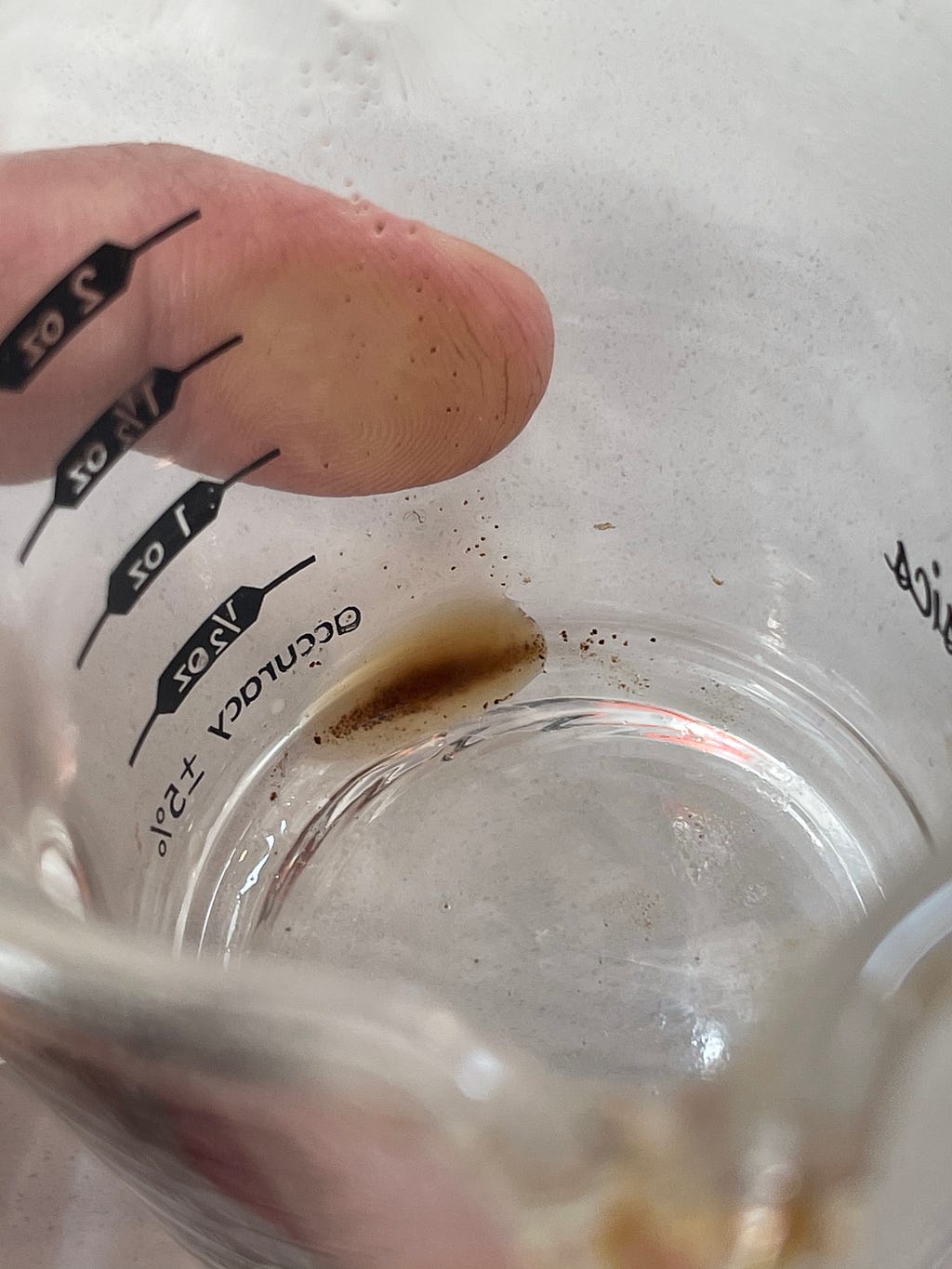
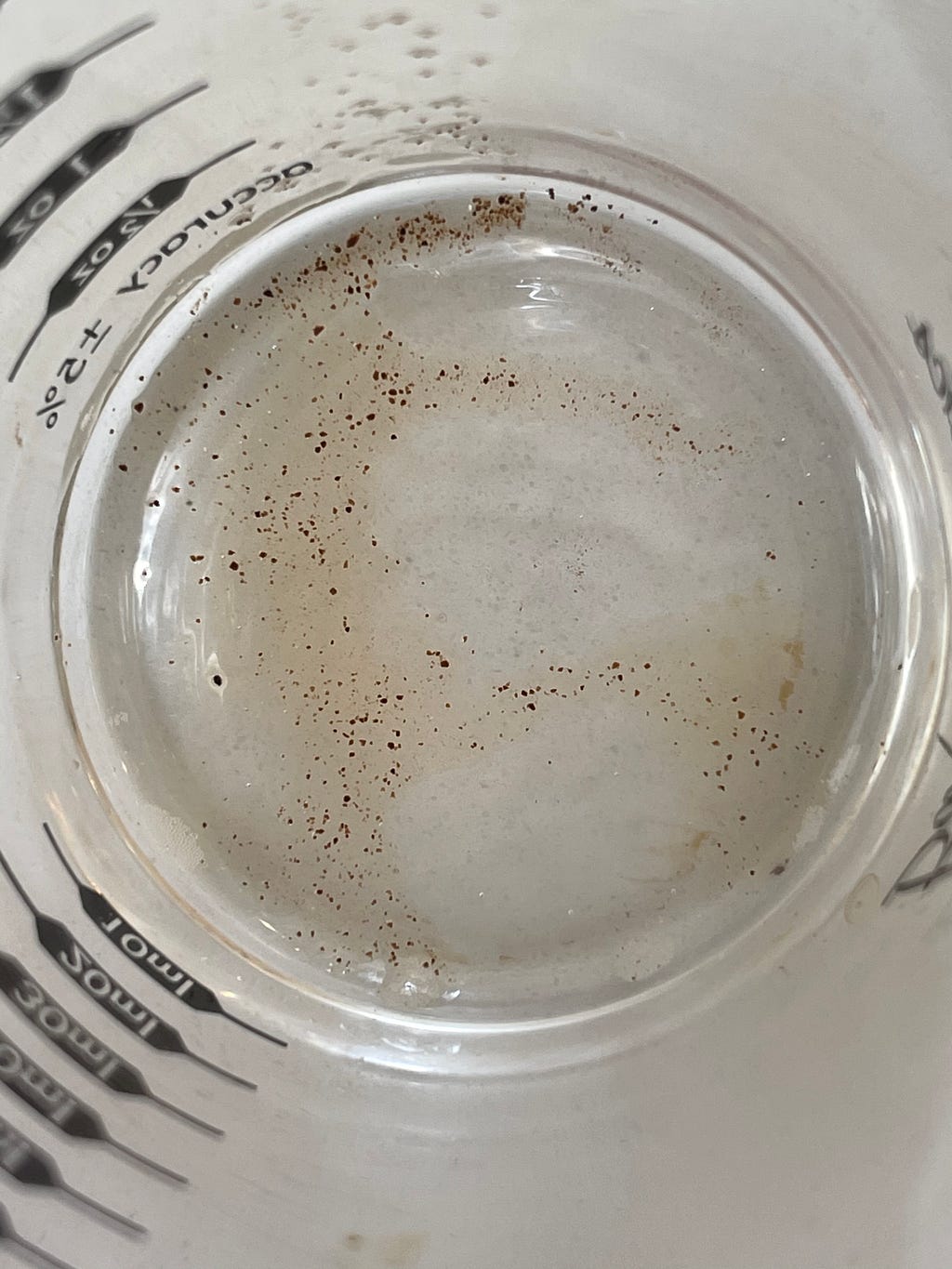
Post-Shot Analysis
I had cut the puck into 6 layers, and I let them dry out for a few days. I looked at each of the layers compared to what it should have been.
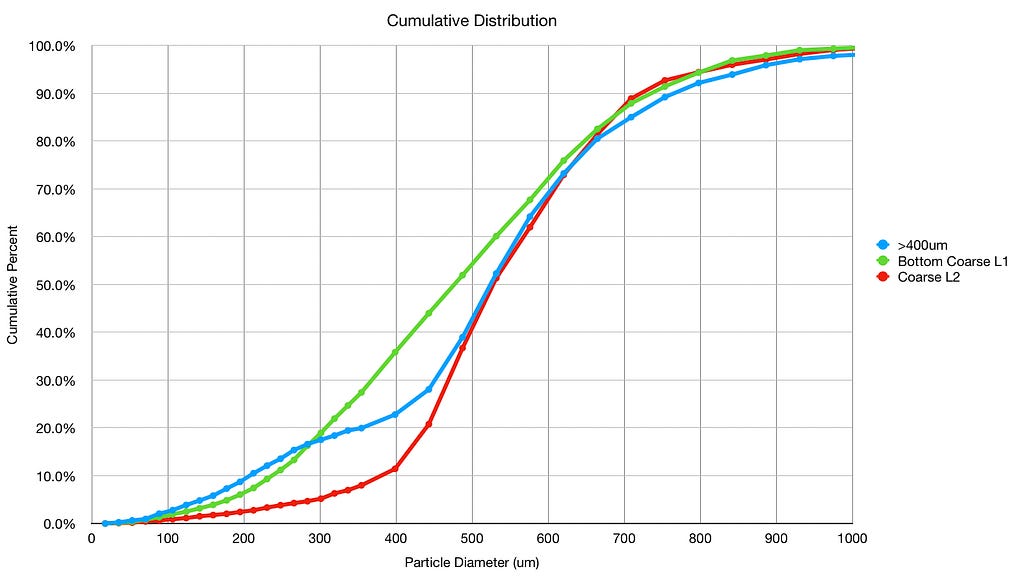
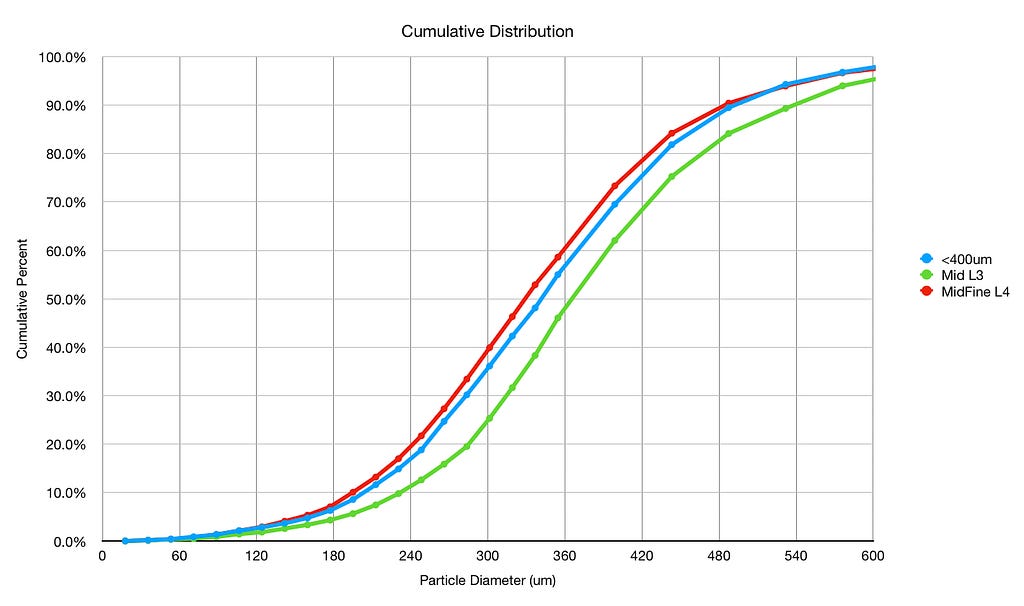
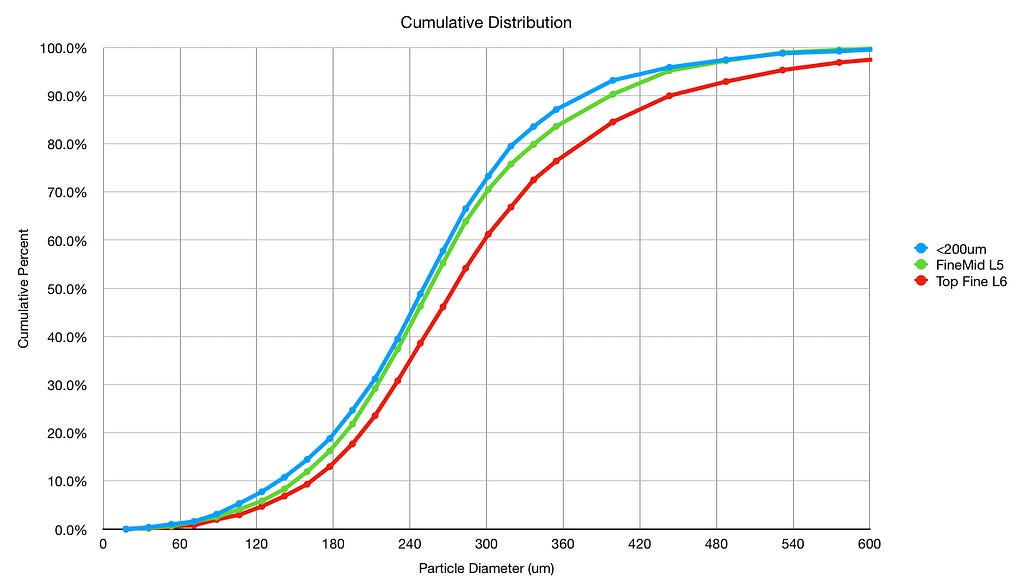
The coarser grounds had a weird mix of the two layers where one layer had all of the fines. This may have been from me trying to get the puck out.
I also looked a cumulative plots, and most of the distributions stayed the same. The graph on the right is a zoomed in version of the one on the left.
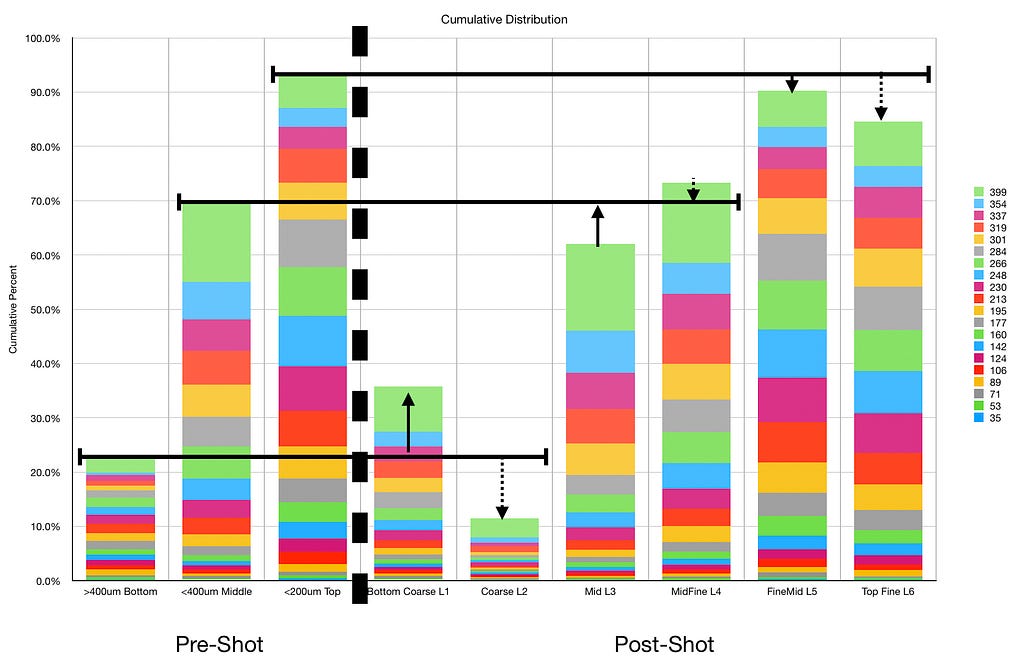
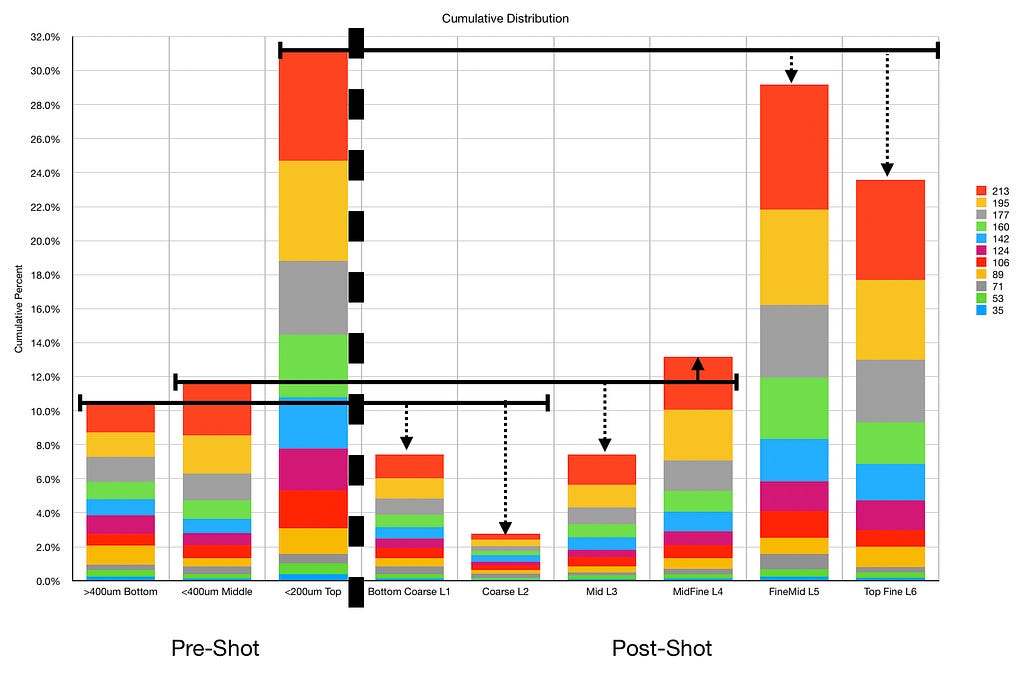
Averaging Layers
This amount of data was overwhelming. So I averaged the layers. This comparison made good sense once I saw how the distributions overlayed.
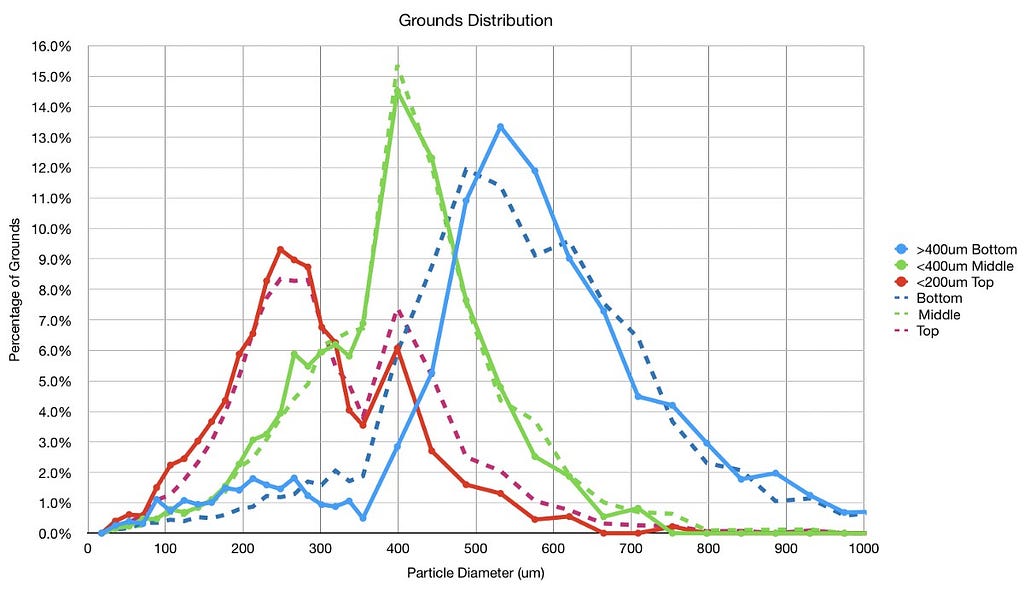
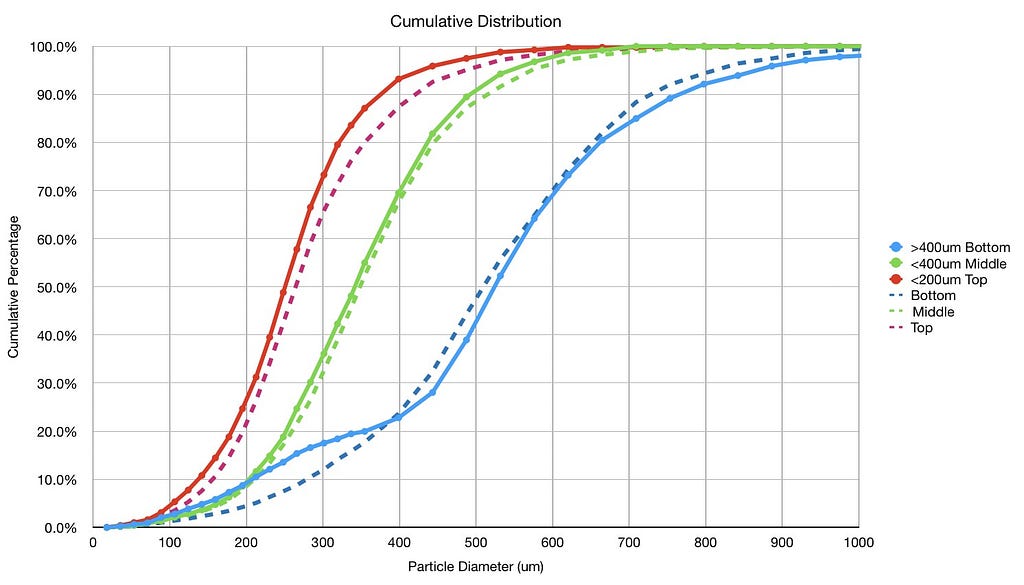
I found it strange that fines reduce in bottom layer (>400um) suggesting fines in mostly coarse particles would migrate out and into the cup.
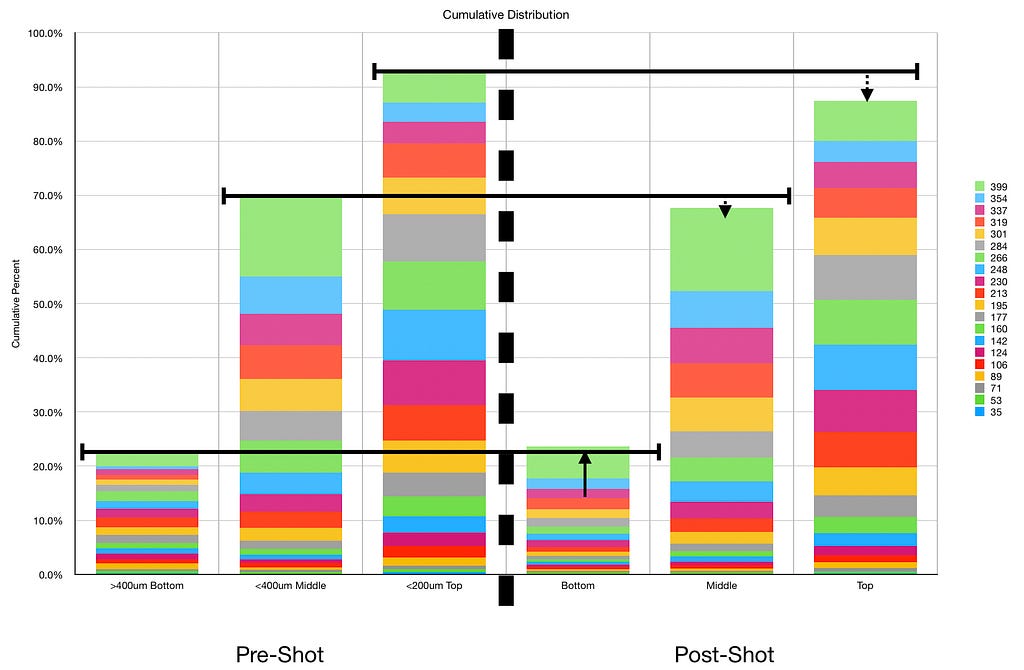
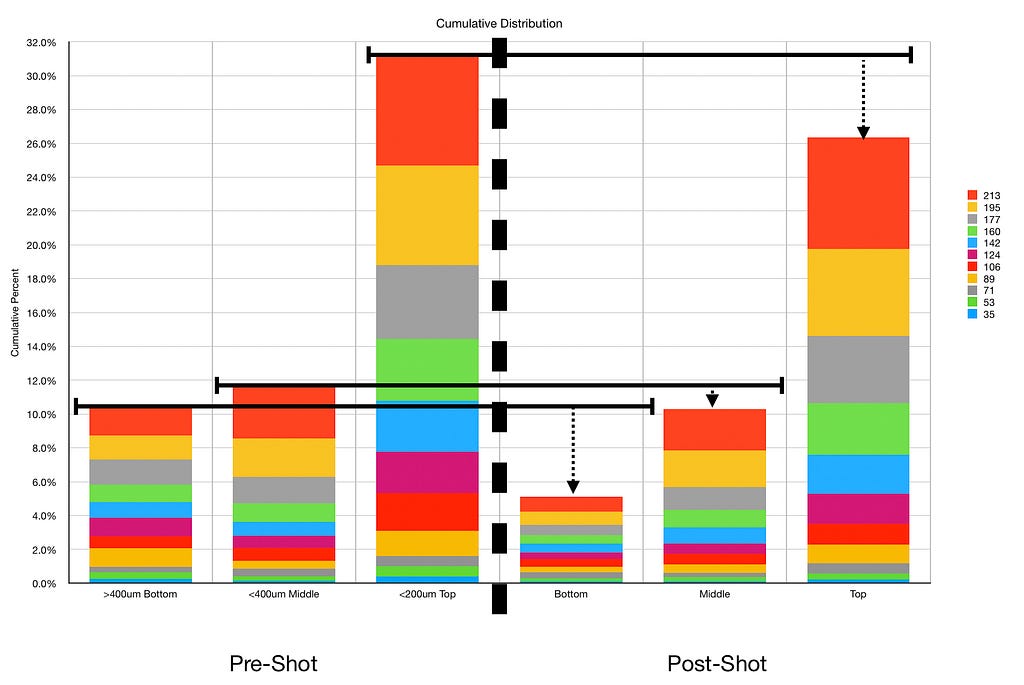
I was surprised more fines didn’t end up in the coarse (>400um) layer on the bottom. I was also bummed that I had so much trouble getting the puck out. Overall, I think the experiment was inconclusive, and it certainly did not result in a huge shift of finer particles into the bottom layer.
If you like, follow me on Twitter and YouTube where I post videos of espresso shots on different machines and espresso related stuff. You can also find me on LinkedIn. You can also follow me on Medium and Subscribe.
Further readings of mine:
Collection of Espresso Articles
A Collection of Work and School Stories
Measuring Coffee Grind Particle Distribution using Image Processing
A Summary of the Staccato Lifestyle
Measuring Coffee Grind Distribution
Espresso Baskets and Related Topics
Transparent Portafilter Experiments
Fines Migrate in Espresso, but Not Far: Part 2 was originally published in Towards Data Science on Medium, where people are continuing the conversation by highlighting and responding to this story.
from Towards Data Science - Medium https://ift.tt/321ZHyh
via RiYo Analytics

No comments